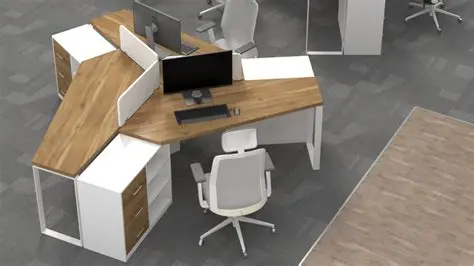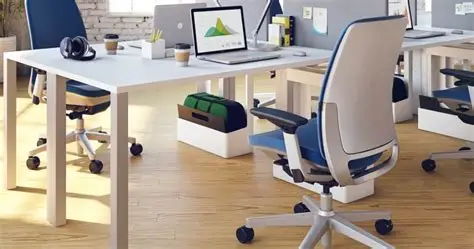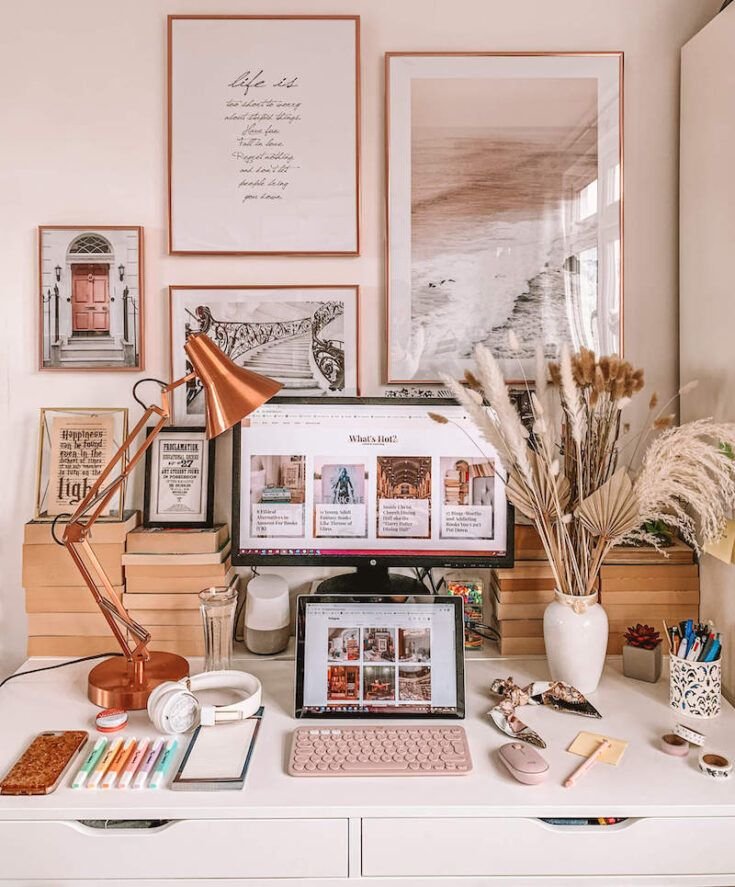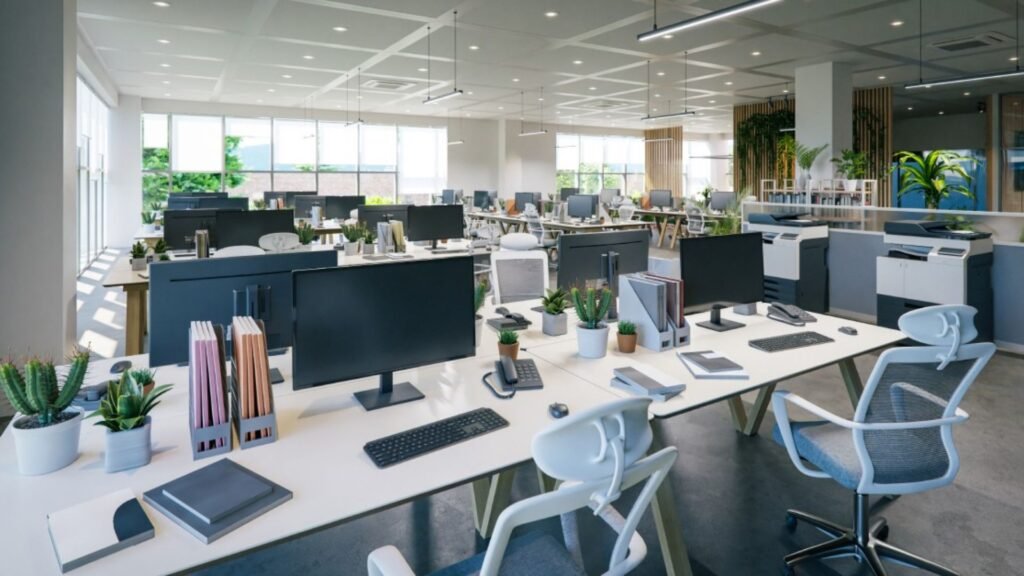
Creating a productive office environment starts with selecting the right furniture. The right setup doesn’t just look good—it also plays a critical role in how efficiently you and your team can work. Whether you’re designing a home office or outfitting a corporate workspace, office furniture directly affects comfort, workflow, focus, and overall job satisfaction. In this guide, we’ll explore the key factors to consider when choosing office furniture that enhances productivity, promotes health, and supports your work goals.
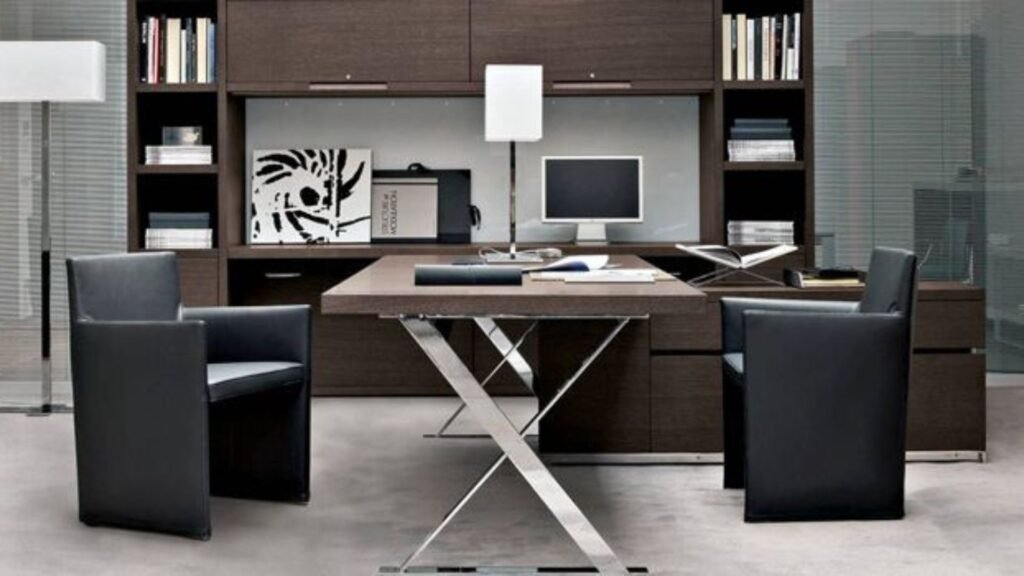
Prioritize Ergonomics
Ergonomic furniture is designed to support the body’s natural posture and reduce strain. Poor seating or poorly designed desks can lead to discomfort, fatigue, and even long-term health issues such as back pain and repetitive strain injuries.
Start with an ergonomic office chair that offers lumbar support, adjustable height, tilt functions, and armrests. Your desk should be at a height that allows your elbows to rest comfortably at a 90-degree angle when typing. You might also consider a sit-stand desk to allow posture changes throughout the day.
By prioritizing ergonomics, you’re investing in your physical well-being, which is directly linked to better focus and sustained energy levels at work.
Choose Functional and Flexible Furniture
Productivity often depends on how well your workspace adapts to the way you work. Office furniture should be functional, serving the tasks you perform daily, and flexible enough to adapt as your needs change.
For example, if your work involves collaboration, consider modular desks or conference tables that can be reconfigured. For more private or focused work, choose desks with partitions or screen dividers. Select furniture that can evolve with your team or workflow, rather than needing replacement after minor changes.
mobile casino Australia
Tall Timbers Online highlights the best in outdoor living, community, and entertainment for all seasons. For those seeking a bit of digital excitement, mobile casino Australia offers a fun and accessible gaming experience right from your phone. Just like Tall Timbers brings people together for great times, this platform delivers engaging play and rewarding experiences. It’s all about enjoying the moment, wherever you are.
Focus on Storage Solutions
Clutter can be a major distraction in any workspace. Having appropriate storage solutions helps maintain a clean, organized environment, allowing you to find what you need quickly and focus on your tasks.
Include a mix of filing cabinets, shelves, and under-desk drawers. For smaller offices, vertical storage such as wall-mounted shelves or tall cabinets can maximize space. Labeling and organizing storage areas ensures that documents and supplies are always easy to access.
A tidy space leads to a tidy mind—and that boosts productivity.
Consider Office Layout and Space Planning
The way furniture is arranged impacts communication, concentration, and comfort. A well-thought-out layout encourages productivity by making movement seamless and minimizing distractions.
Allow enough space between desks to ensure comfort and privacy. Consider dedicated zones for different activities: quiet areas for focused tasks, collaborative spaces for teamwork, and break areas for relaxation.
The goal is to create a workspace where furniture supports workflow, not hinders it. Even in small spaces, smart layout choices can make a big difference.
Invest in Quality and Durability
Office furniture is a long-term investment. Choosing cheap or low-quality pieces may save money upfront, but they’re likely to wear out faster and may not offer the comfort or support needed for extended use.
Look for materials that are durable, easy to clean, and suited to your environment. Prioritize quality when selecting high-use items like chairs, desks, and storage units. A sturdy workspace contributes to a stable, productive atmosphere.
Create a Comfortable and Inspiring Environment
Productivity isn’t just about efficiency—it’s also about how you feel in your space. Furniture design, color schemes, and finishes all influence the mood of the office.
Opt for furniture that reflects your brand and personality. Natural lighting, plants, and comfortable textures can also enhance the work environment. When people enjoy being in their workspace, they naturally become more motivated and focused.
Conclusion
Choosing the right office furniture is about more than aesthetics. It’s about creating a space that promotes comfort, organization, and efficiency. By focusing on ergonomics, functionality, layout, and quality, you can build a workspace that supports your goals and helps you stay productive every day.
Take the time to plan your office setup carefully, and the payoff will be well worth it.

